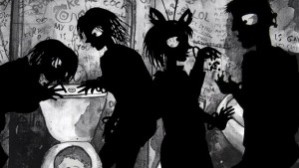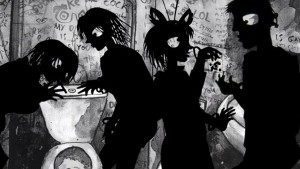
The future is flat, but we will be singing. All what is left for our visual and haptic sensations is the surface. Don’t tell me you still think 3D and virtual reality has depth. In fact it is as plane as Shadow Theater. 
In this future, that is already looking outdated, we touch those surfaces but barely each other. Though if you wish to have skin contact, you can buy the ‘searchme’ strip. A small strip with an extra ordinary effect, to be put onto your skin for your next airplane trip and you certainly will get touched all over by the security personal. In this dispersed surfing experience Kim Kardeshian is better known than any actual geographic place. History is composed by bits of people’s fragmentary clips, as short as our interest span has become. 
Do you recall when you still thought that Tomorrow is always too long? And again the kids’ understanding of flat ontology is expressed in a less object oriented way: they regard animals as smarter than humans by noticing that they can connect without an iphone.
It is this naïve view the recent film of the artist Phil Collins takes on. Tomorrow is always too long is an archeological ‘musicumentary’ of his hometown Glasgow in current times. If you bring enough understatement it is a nicely entertaining experience, otherwise it demands some deciphering to get the jest of a 90s retro like critique of surface culture.
